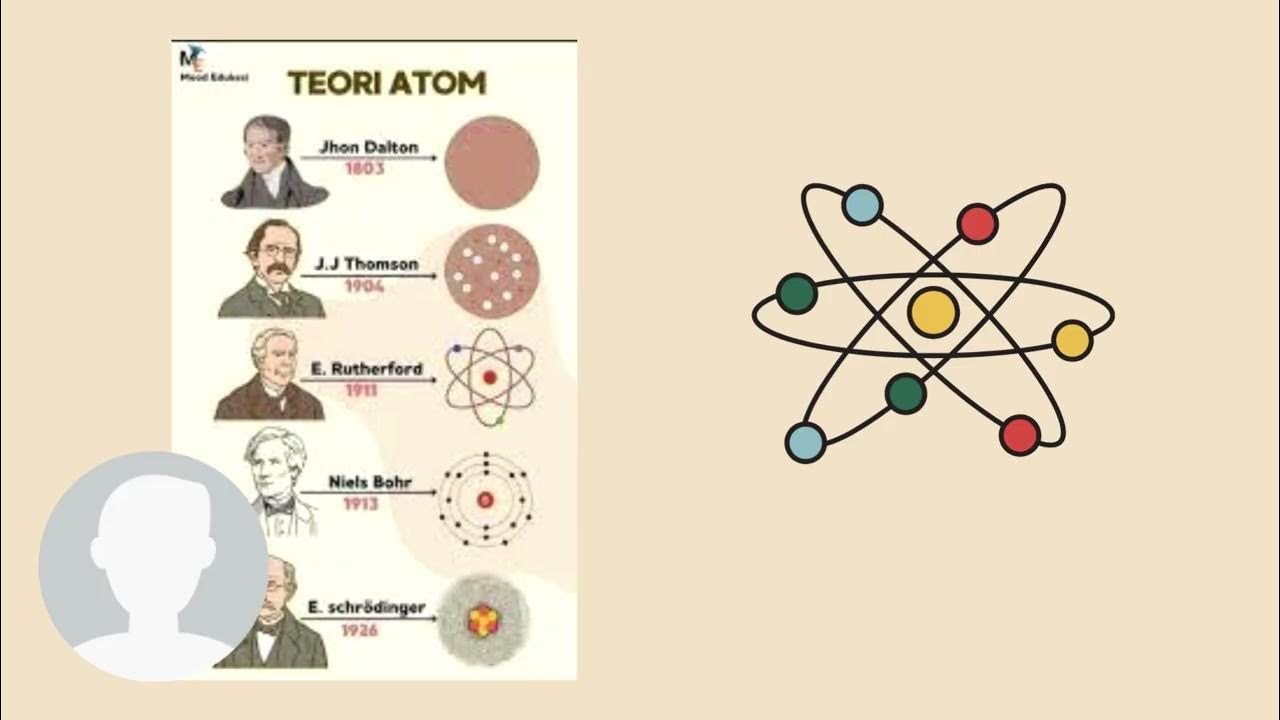What Is An Atom And How Do We Know?
Summary
TLDRThis script explores the concept of atoms, the basic units of chemistry, and how their existence has been historically theorized and empirically confirmed. From Democritus's early hypothesis of indivisible 'Atomos' to the modern use of scanning tunneling microscopes for direct observation, the narrative traces the scientific journey of understanding atoms. It also touches on the periodic table, chemical reactions, and the atomic theory by John Dalton, concluding with the visualization of atoms and their composition, fostering curiosity about the fundamental building blocks of matter.
Takeaways
- 🌐 Atoms are the basic units of matter and the fundamental building blocks of chemistry.
- 📚 Scientists have identified 118 different types of atoms, known as elements, which are organized on the periodic table.
- 🔬 Atoms are too small to be seen with the naked eye, but their existence and properties can be inferred through various scientific methods.
- 🤔 Democritus, an ancient Greek philosopher, first proposed the concept of atoms as indivisible particles, although he lacked empirical evidence.
- 🧪 The work of Arabic scientists and later Lavoisier in the 1700s demonstrated that substances could be broken down into pure elements through chemical reactions.
- 🔬 Dalton's law of multiple proportions suggested that elements are made of small, indivisible units, which he called atoms.
- 📈 Einstein and Perrin's work in the early 20th century provided experimental evidence for the existence and size of atoms.
- 🔬 Advances in microscopy, such as the scanning tunneling microscope, allowed for the direct visualization of atoms.
- 🧲 Atoms can be further divided into subatomic particles, contradicting the original 'uncuttable' definition.
- 🌌 The animation was funded by the Casal Research Center and patrons, emphasizing the importance of scientific outreach and education.
- 🎮 The video also promoted a video game called 'Bond Breaker' for educational purposes, showcasing the intersection of gaming and chemistry.
Q & A
What are atoms and why are they important in chemistry?
-Atoms are the fundamental building blocks of matter and are essential in chemistry because they are the smallest units of an element that retain the properties of that element. They are important because all matter is composed of atoms, and the study of their interactions forms the basis of chemical reactions.
How many types of atoms, or elements, have scientists discovered?
-Scientists have discovered 118 types of atoms, which are referred to as elements.
What tool do scientists use to organize and study the properties of elements?
-Scientists use the periodic table to organize and study the properties of elements.
Who is credited with first proposing the idea of an atom?
-Democritus, an ancient Greek philosopher, is credited with first proposing the idea of an atom.
What does the term 'Atomos' mean and why did Democritus use it?
-The term 'Atomos' means 'uncuttable' in Greek. Democritus used it because he believed that atoms were the smallest, indivisible particles of matter that could not be divided any further.
How did the Arabic world contribute to the understanding of atoms?
-Arabic scientists developed complex processes of filtration, boiling, vapor collection, and cooling to extract pure substances from crude starting materials. This work laid the foundation for the understanding that matter could be divided into elements.
Who were the French scientists that contributed to the understanding of elements and their indivisibility?
-Marianne Poulain and Antoine Lavoisier were the French scientists who studied and built upon the work of their predecessors, concluding that certain pure substances, like oxygen and hydrogen, were elements and could not be broken down further.
What evidence supports the existence of atoms?
-Evidence supporting the existence of atoms includes chemical reactions that demonstrate their effects, mathematical equations that calculate their sizes, and direct visual confirmation through technologies like the scanning tunneling microscope.
What was John Dalton's contribution to the understanding of atoms?
-John Dalton observed patterns in the quantities of elements used in chemical reactions, suggesting that elements are made of tiny, indivisible units called atoms. He proposed the atomic theory, which states that all matter is composed of atoms.
Who confirmed the existence of atoms through experiments based on Einstein's work?
-Jean Perrin, a French physicist, used Einstein's concepts to perform experiments that confirmed the existence of atoms beyond reasonable doubt.
How did the scanning tunneling microscope change our understanding of atoms?
-The scanning tunneling microscope allowed scientists to take undistorted images of atoms, providing direct visual evidence of their existence and arrangement.
Outlines

此内容仅限付费用户访问。 请升级后访问。
立即升级Mindmap

此内容仅限付费用户访问。 请升级后访问。
立即升级Keywords

此内容仅限付费用户访问。 请升级后访问。
立即升级Highlights

此内容仅限付费用户访问。 请升级后访问。
立即升级Transcripts

此内容仅限付费用户访问。 请升级后访问。
立即升级5.0 / 5 (0 votes)






